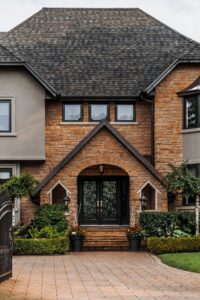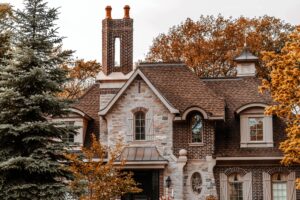The world of smart lighting has revolutionized the way we illuminate our homes, and Philips Hue is a popular choice for many homeowners and renters alike. However, like any technology, Philips Hue systems can sometimes encounter issues that may leave you in the dark. In rental properties, these issues can be particularly frustrating as tenants rely on these smart lights for everyday tasks. In this guide, we’ll explore some common problems that may arise with Philips Hue systems in rental properties and provide expert tips on troubleshooting like a pro to get your lights shining bright again.
Key Takeaways:
- Proper Setup: Ensure a correct and thorough installation of Philips Hue devices in rental properties to avoid common issues.
- Use Compatible Devices: Make sure all devices used in conjunction with Philips Hue are compatible with the system to prevent connectivity problems.
- Regular Maintenance: Schedule periodic checks and updates to the Philips Hue system to address any potential issues before they escalate.
- Troubleshooting Techniques: Familiarize yourself with troubleshooting techniques provided by Philips Hue support to efficiently resolve common issues.
- Communication with Tenants: Establish clear communication with tenants regarding Philips Hue devices, their usage, and troubleshooting steps to address any issues promptly.
Getting Started with Troubleshooting
Tools and Resources Needed
One crucial aspect of troubleshooting Philips Hue issues in rental properties is having the right tools and resources at hand. Make sure you have a strong Wi-Fi connection, a smartphone or tablet with the Philips Hue app installed, and access to the Philips Hue Bridge for initial setup and troubleshooting. Additionally, keep the user manual and troubleshooting guides from Philips handy for reference.
Initial Assessment and Common Symptoms
One of the first steps in troubleshooting Philips Hue issues is to conduct an initial assessment of the system and identify common symptoms. Any flickering or unresponsive bulbs, connectivity issues with the Philips Hue Bridge, and problems with the Philips Hue app are common symptoms that may indicate underlying issues. By understanding these common symptoms, you can effectively pinpoint the root cause of the problem and work towards a solution.
When conducting an initial assessment, pay close attention to any error messages or alerts shown in the Philips Hue app, as they can provide valuable insights into the nature of the issue. Additionally, check the physical connections of the bulbs, the Philips Hue Bridge, and the Wi-Fi router to ensure everything is properly connected and powered on.
Fixing Connectivity Issues
Resolving Wi-Fi Interference and Signal Problems
Little issues like Wi-Fi interference or signal problems can disrupt the connectivity of your Philips Hue lights in a rental property. To troubleshoot this, try moving the Philips Hue Bridge closer to the Wi-Fi router to ensure a stronger signal. Additionally, consider adjusting the Wi-Fi channel on your router to minimize interference.
Restoring Connections with Philips Hue Bridge
One common connectivity issue with Philips Hue lights is a lost connection with the Philips Hue Bridge. To resolve this, ensure that the Bridge is plugged in and connected to the router. Restarting the Bridge by unplugging it for a few seconds and then plugging it back in can often restore the connection.
Connectivity problems with Philips Hue lights can be frustrating, but with some troubleshooting, you can quickly restore functionality to your rental property’s smart lighting system. Plus, staying informed about common issues and solutions can help you proactively address connectivity issues and minimize disruptions for your tenants.
Addressing Bulb and Hardware Challenges
Troubleshooting Defective or Flickering Bulbs
On occasion, you may encounter defective or flickering Philips Hue bulbs in your rental property. This can be frustrating for both you and your tenants, but the good news is that there are steps you can take to address this issue efficiently. Start by ensuring that the bulb is properly screwed in and receiving power. If the problem persists, try resetting the bulb by turning it off and on several times. If these steps do not resolve the issue, consider replacing the bulb with a new one.
Handling Remote Access and Firmware Updates
Troubleshooting remote access and managing firmware updates for your Philips Hue system is crucial to ensure optimal performance. Plus, staying on top of firmware updates can help prevent connectivity issues and security vulnerabilities. To troubleshoot remote access, check your internet connection and ensure that the Philips Hue Bridge is properly connected. For firmware updates, regularly check the Philips Hue app for any available updates and follow the instructions provided to keep your system up to date.
Implementing Best Practices for Ongoing Maintenance
Scheduled Inspections and Updates
One of the key practices in maintaining Philips Hue lighting systems in rental properties is to conduct regular scheduled inspections and updates. By proactively checking the system for any issues and ensuring that all components are up to date with the latest firmware, you can prevent potential problems before they escalate.
Training Tenants for Basic Troubleshooting
To empower tenants to handle common Philips Hue issues on their own, it is important to provide basic troubleshooting training. This can include guidance on resetting bulbs, reconnecting bridges, and using the Hue app effectively. By equipping tenants with these skills, you can reduce the frequency of maintenance calls and ensure a smoother overall experience with the lighting system.
Another effective strategy is to create a troubleshooting guide that tenants can refer to when faced with common issues. This guide should include step-by-step instructions for resolving common problems and contact information for more complex issues that may require professional assistance. By arming tenants with the knowledge to troubleshoot independently, you can minimize disruptions and maintain the functionality of the Philips Hue system in your rental properties.
Final Words
To wrap up, troubleshooting common Philips Hue issues in rental properties doesn’t have to be a daunting task. By following the steps outlined in this guide and having a solid understanding of the common problems that can occur, you can effectively fix any issues that arise with confidence. Remember to always check the basics first, such as ensuring the lights are properly connected and the bulbs are functioning. Utilize the Philips Hue app and online resources for assistance, and don’t hesitate to reset devices if necessary. With these techniques in your toolkit, you’ll be able to troubleshoot like a pro and keep your rental properties well-lit and functional for your tenants.
FAQ
Q: What should I do if my Philips Hue lights are not connecting to the bridge?
A: First, ensure that the lights are within range of the bridge and that the bridge is powered on. Try resetting the bridge and lights by power cycling them. If the issue persists, consider checking for any interference from other wireless devices.
Q: How can I resolve issues with my Philips Hue app not controlling the lights?
A: Make sure that your app is updated to the latest version. Check if your smartphone or tablet is connected to the same network as the bridge. Restart the app or try reinstalling it if the problem continues.
Q: What can I do if my Philips Hue lights are unresponsive to commands?
A: Verify that the lights have power and are not switched off manually. Check if the bridge is functioning correctly and that there are no recent firmware updates pending. Resetting the lights and re-pairing them with the bridge may also help.
Q: How do I troubleshoot issues with Philips Hue lights flashing or flickering?
A: Ensure that the lights are using compatible dimmer switches or dimmable fixtures. Check if there are any loose connections or faulty wiring causing the flickering. Adjust the dimmer settings or replace any incompatible components as needed.
Q: What should I do if my Philips Hue lights are not changing colors as expected?
A: Confirm that the lights are color-capable and that the color settings are adjusted correctly in the app. If the colors are still not changing, try resetting the lights or adjusting the brightness levels. Updating the firmware on the bridge and lights may also resolve the issue.


